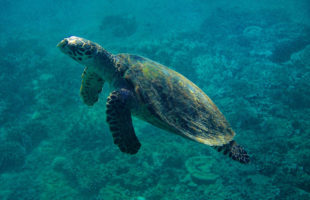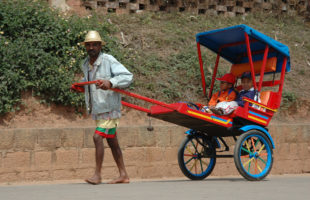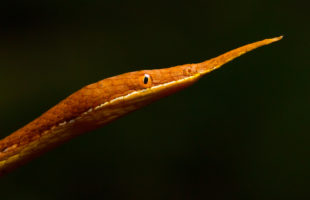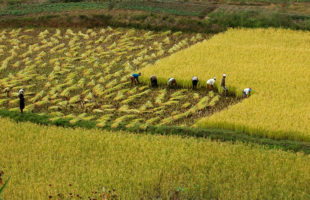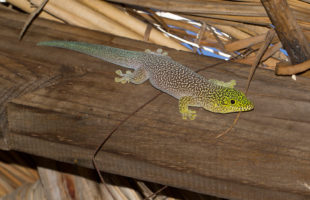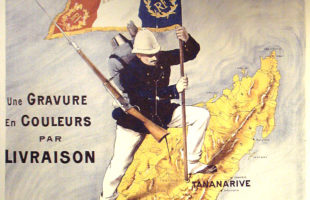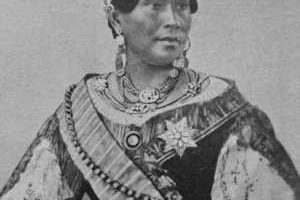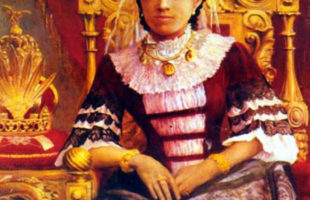Nosy Tanikely: Nosy Tanikely means “island of little earth”, which alludes to the small area of the island. The often-used spelling “Tanihely” with h instead of k is not a spelling mistake, but only the name of the park in the dialect of the local people, the Sakalava. Location: Nosy Tanikely National Park is located in northwestern Madagascar off the …
LesenMasika sipa
Fascinating predators: Idolomorpha madagascariensis
Praying mantises are ill-reputed as man eating and murderous within the animal kingdom. And the triangular-shaped head lets them look like real aliens. But there is more to it than that! They are fascinating insects, and an especially impressing species among them is Idolomorpha madagascariens from Madagascar. It exceeds most Malagasy praying mantis with a body length of filigree seven …
LesenThe left-handed lemurs: Coquerel’s sifakas
With their typical teddy bear-like appearance, they wrap many travellers around their fingers: Coquerel’s Sifakas (Propithecus coquereli) wear a plush, snow-white fur, whereby the upper sides of the arms and thighs as well as the chest are deeply chocolate brown colored. With up to a half meter head-torso-length – in addition, another half meter tail – as well as approximately …
LesenPousse-Pousse
If you want to travel in Madagascan cities without a motor, it’s best to take a Pousse-Pousse. These are rickshaws made of colourfully painted wood, which are either pulled by a man on foot or on a bicycle (Cyclo-Pousse). In Malagasy, the vehicle’s name is posy posy, but this is only the Madagascan spelling of the French word. Translated, it …
LesenThe Malagasy leaf-nosed snake
A nose that somehow resembles a frayed leaf and can be bent, and an elongated body: these are the most outstanding characteristics of the Langaha madagascariensis, one of many bizarre animals in Madagascar. The purpose of the bizarre nasal process has not yet been clarified. In males, it looks more like a Pinocchio nose than a leaf. The name of …
LesenThe grain of life – Rice cultivation in Madagascar
Rice, in Malagasy vary, has in hardly any other country such an enormous relevance as in Madagascar. The island has one of the highest per capita consumption of rice worldwiede: On average, each Madagascan eats 120 kg rice per year. Thus Madagascar is in the lead far in front of typical rice cultivation countries like China, which has an average …
LesenA gecko jewel: Standing’s Day Gecko
In southwest Madagascar, between spiny forests and wooden huts, lives a gecko with triking colours: Standing’s Day Gecko (Phelsuma standingi). Who visits the dry, hot area between Morombe, Toliara (French Tuléar) and the national park Isalo, will sooner or later meet this beautiful reptile. It originally lives in dry and spiny forests, but today – contrary to many other, outdated …
LesenThe Franco-Hova wars – The beginning of the colonial rule
In december 1883, France invaded Madagascar with armies. As reason for the invasion, violation of Lambert charter, the letters of request by Radama II. to France and reconfiscation of the property of French citizens was stated. The discussion leading up to the attack was also influenced by the facts that France had occupied Mauritius in 1810 successfully, that French soldiers …
LesenThe last kings of the Merina people
In August 1861, Ranavalona I. died, and her then 32 years old son became the Merina king at last. During Ranavalonas I. reign, the Malagasy people was reduced from approximately five million to less than half. Lambert returned to Madagascar again to claim the rights he had gained by the Lambert charter. The king bestowed him those as promised, which …
LesenRanavalona’s I. reign of terror
In 1828, after the death of her husband, Queen Ranavalona I. came into power by killing all other potential regents (wives, sons, mothers). At that time, she was between 30 and 40 years old. Ranavalona I. went down in history rather ingloriously and bears the surname “the cruel”. Many Malagasy call her regency tany maizina, in English “years of darkness”. …
Lesen MADAMAGAZINE Your Magazine about Madagascar
MADAMAGAZINE Your Magazine about Madagascar
